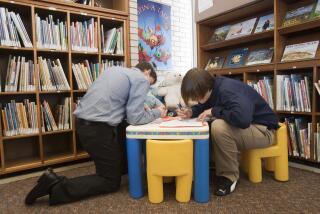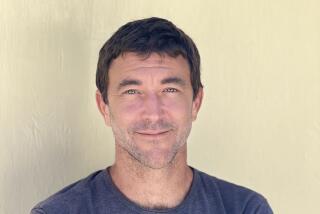Do We View Youths as Victims, or as Resources? : Policy: Those who participate in decisions affecting their lives are more effective in building healthier communities.
Child advocates have high hopes for new national efforts under the Clinton Administration to help America’s youth, but which “image of youth” will prevail?
As governor of Arkansas, Bill Clinton served on the National Commission on Children, whose agenda called for child and dependent-care tax credits and full funding for Head Start. Along the campaign trail, he endorsed child health, prenatal care, preschool programs and other federal initiatives.
Hillary Clinton chaired the Children’s Defense Fund, whose agenda includes increases in education, housing, health care and other human services reduced by cutbacks in the 1980s.
These initiatives are long overdue, but it is important to remember that they represent a particular perspective or “image of youth” and that there is another image with an action agenda of its own.
What are these two images? First is an image of “youth as victims.” This view assumes that young people are vulnerable members of society--too often neglected or abused by adults or victimized by poverty, racism or other forces beyond their control. Proponents of this view want to “save the children,” “defend their rights” and protect them from worsening conditions. Child-protection providers are a vocal presence in Washington, where they promote federal programs to expand needed services for youth.
The second image is “youth as resources.” This view assumes that young people are competent citizens with a right to participate in the decisions that affect their lives, and a responsibility to serve their communities. Proponents of this view want
youth to build on their strengths by “making a difference” in ways that provide
them with tangible benefits and develop healthier communities. Youth advocates abound in small towns, suburbs, large cities, and wherever they work with community-based programs.
In “Young People as Community Builders,” a new report funded by the W. K. Kellogg Foundation and published by the Center for the Study of Youth Policy at the University of Michigan, Janet Finn and I describe increasing efforts by young people to solve problems, plan programs and create community change, such as:
* New York youth are rehabilitating housing for homeless families.
* Minneapolis youth are reaching out to gangs and challenging the forces of poverty.
* Indianapolis youth are assessing local needs and awarding grants to community youth projects.
* Selma, Ala., youth are forming leadership groups for civil rights and social change.
* South Dakota youth are turning school classes into small-town development.
These initiatives vary from place to place, but generally operate in communities that are economically disadvantaged or socially oppressed. Such programs show that when young people become active participants (rather than passive recipients of services), they can alter their personal lives and build healthier communities.
Bill Clinton himself is an example of “youth as resources.” He speaks frequently of his own experience as a youth whose active involvement in community service--and whose trip to meet President Kennedy at the American Legion’s Boys Nation in 1963--had a lasting, positive impact on his personal life and political career. He campaigned for a National Service Trust Fund that would finance college education through significant community service by young people.
Both child-service providers and youth-participation promoters will scramble for scarce resources and seek a sympathetic ear in the Clinton White House. The voices of the service providers are louder in Washington than those of their community-based counterparts, but the hope is that both will be heard.
Which image will prevail? It would be as mistaken for Bill Clinton to overcompensate for past national neglect by proposing programs that view youth solely as clients of services, as it would be to expect young people to shoulder the burden of community problems whose causes and solutions are beyond them.
It would be mistaken to synthesize these two images of youth into one piece of omnibus legislation. There is no single approach to public policy or program planning that encompasses all images of youth in society. These are separate movements that could possibly be used in mutually reinforcing ways, but the challenge is to develop both simultaneously without focusing exclusively on one.
As the United States emerges from the neglect of the ‘80s, both agendas are important and affordable in a “peace dividend” economy. We can only hope that the new national efforts to help children will reflect the realities of young people themselves, rather than the professional ideologies of the adults who advocate for them.
More to Read
Sign up for Essential California
The most important California stories and recommendations in your inbox every morning.
You may occasionally receive promotional content from the Los Angeles Times.









